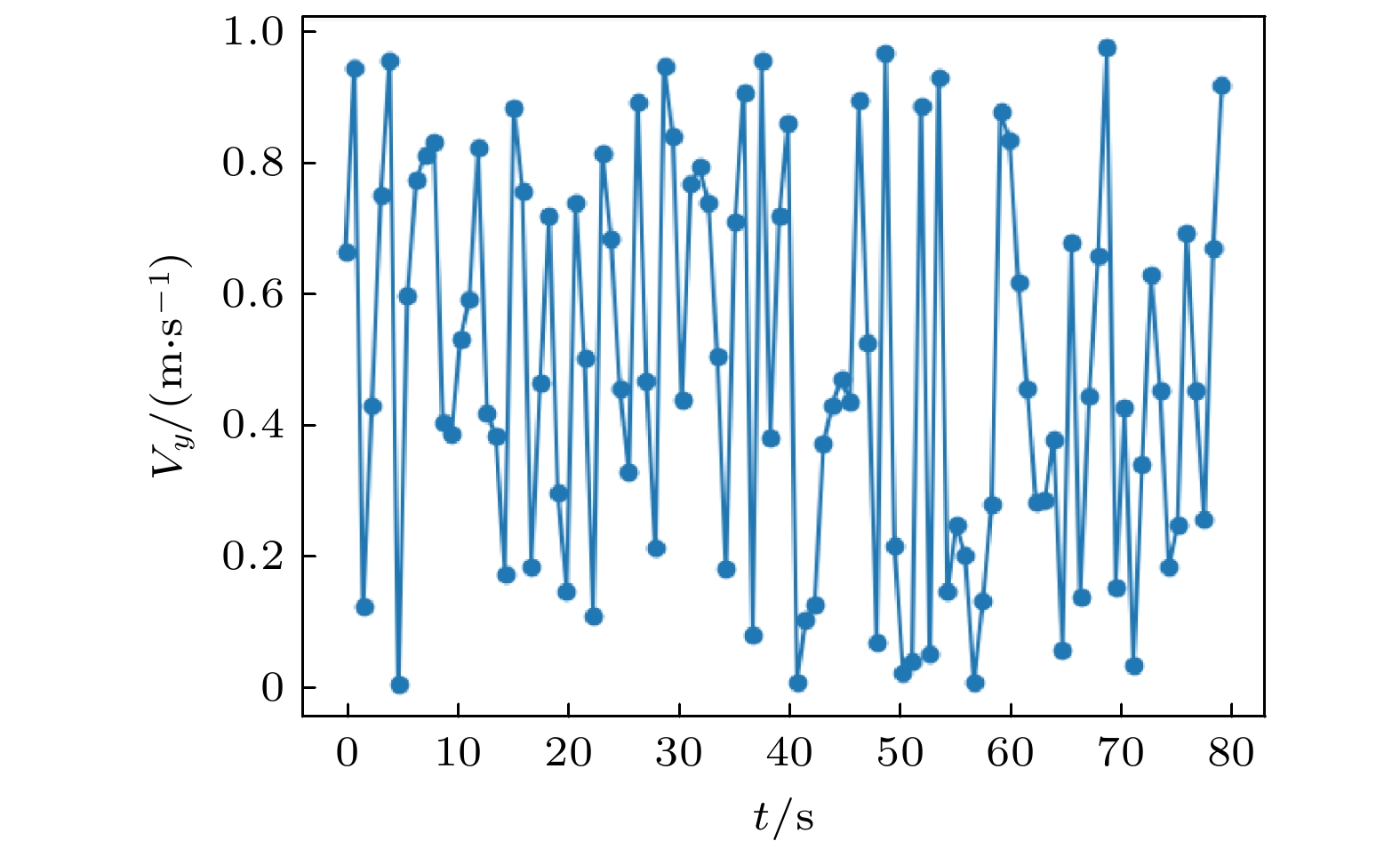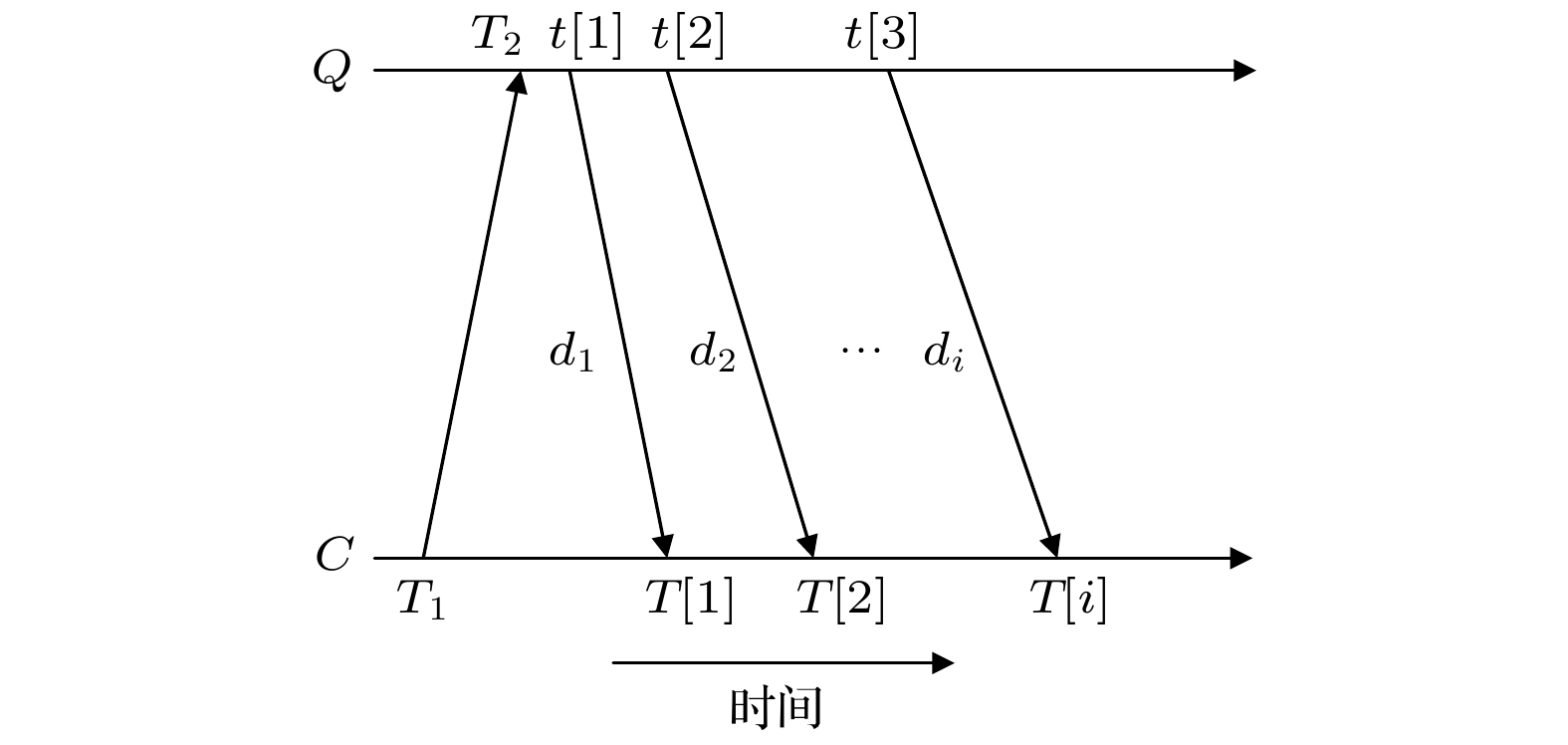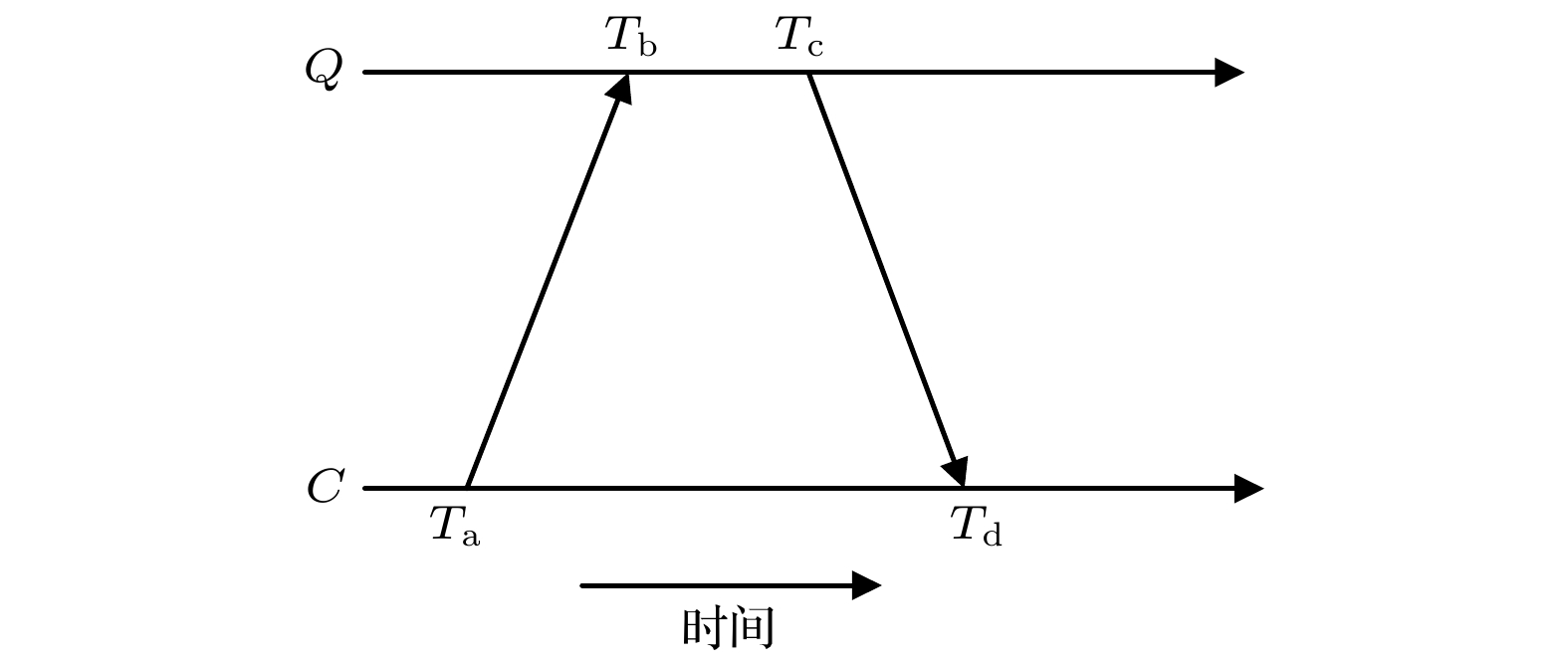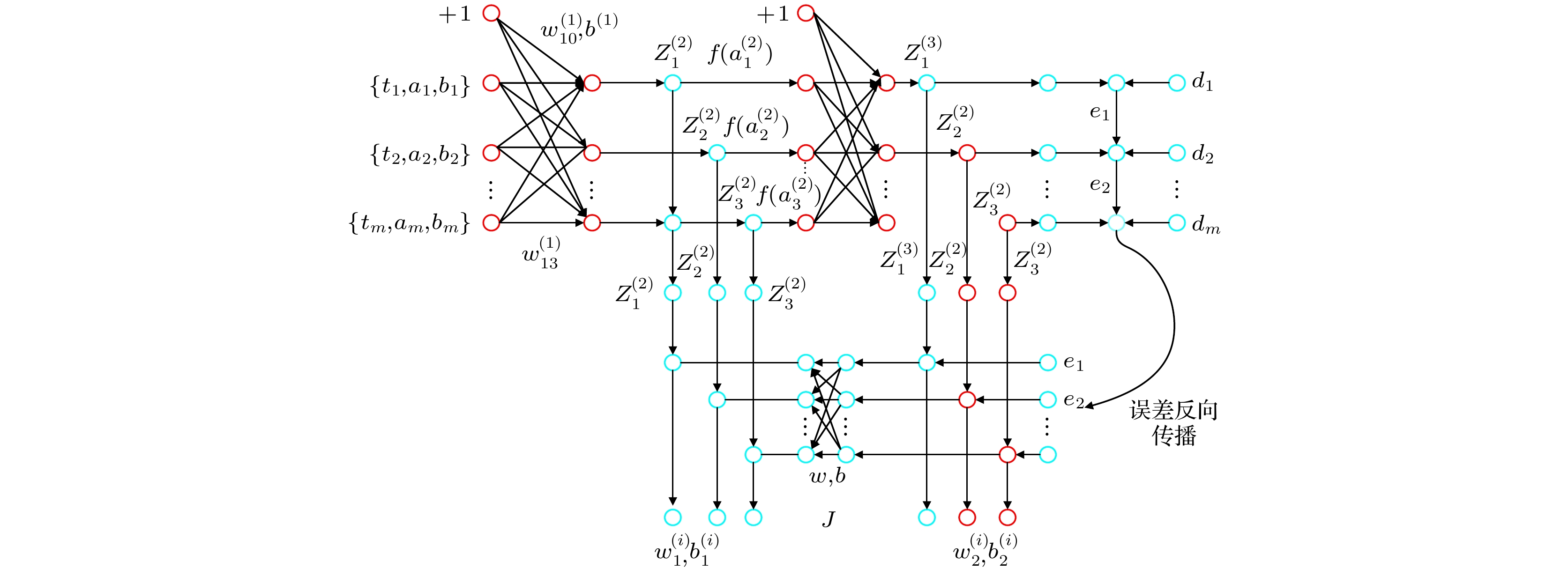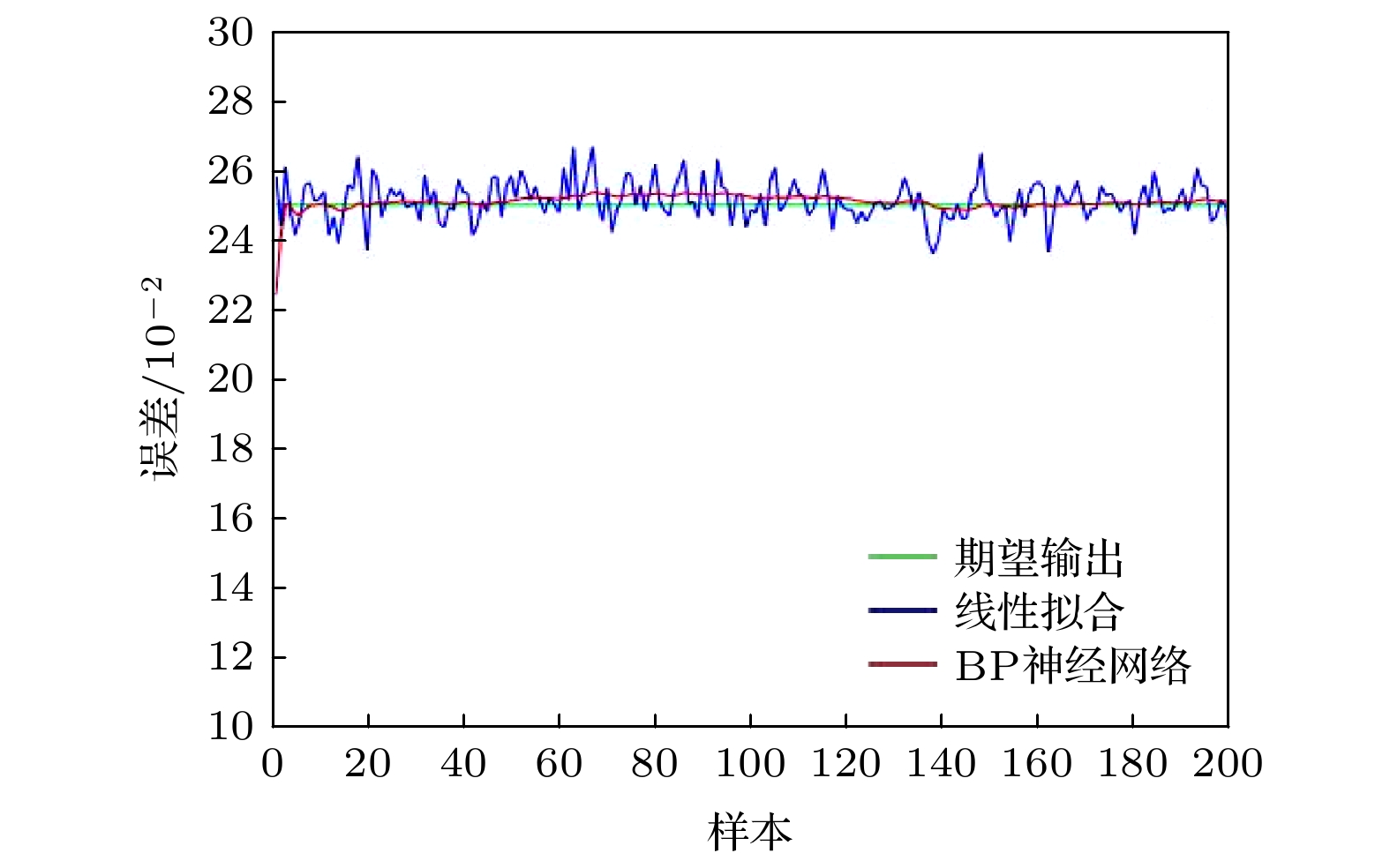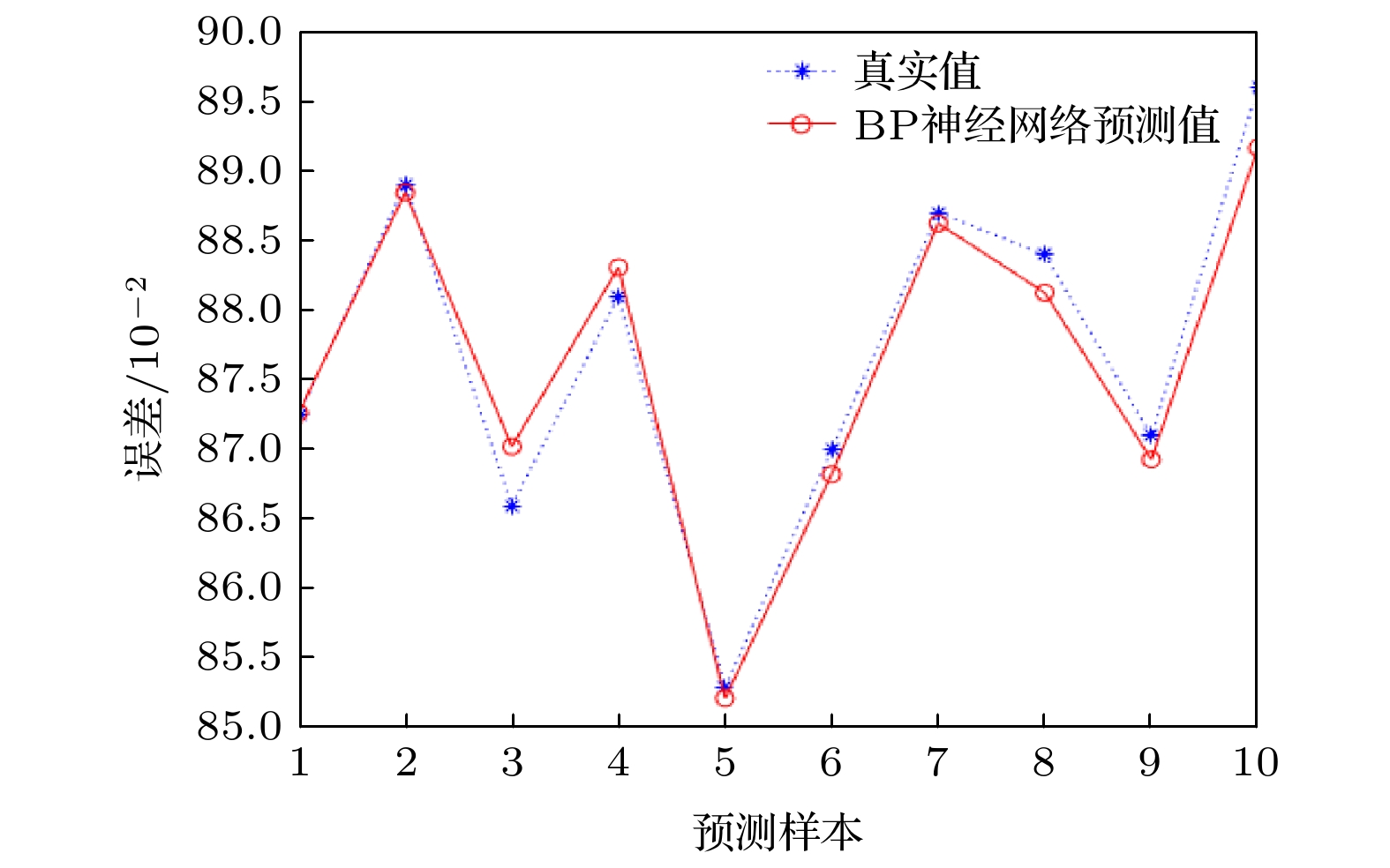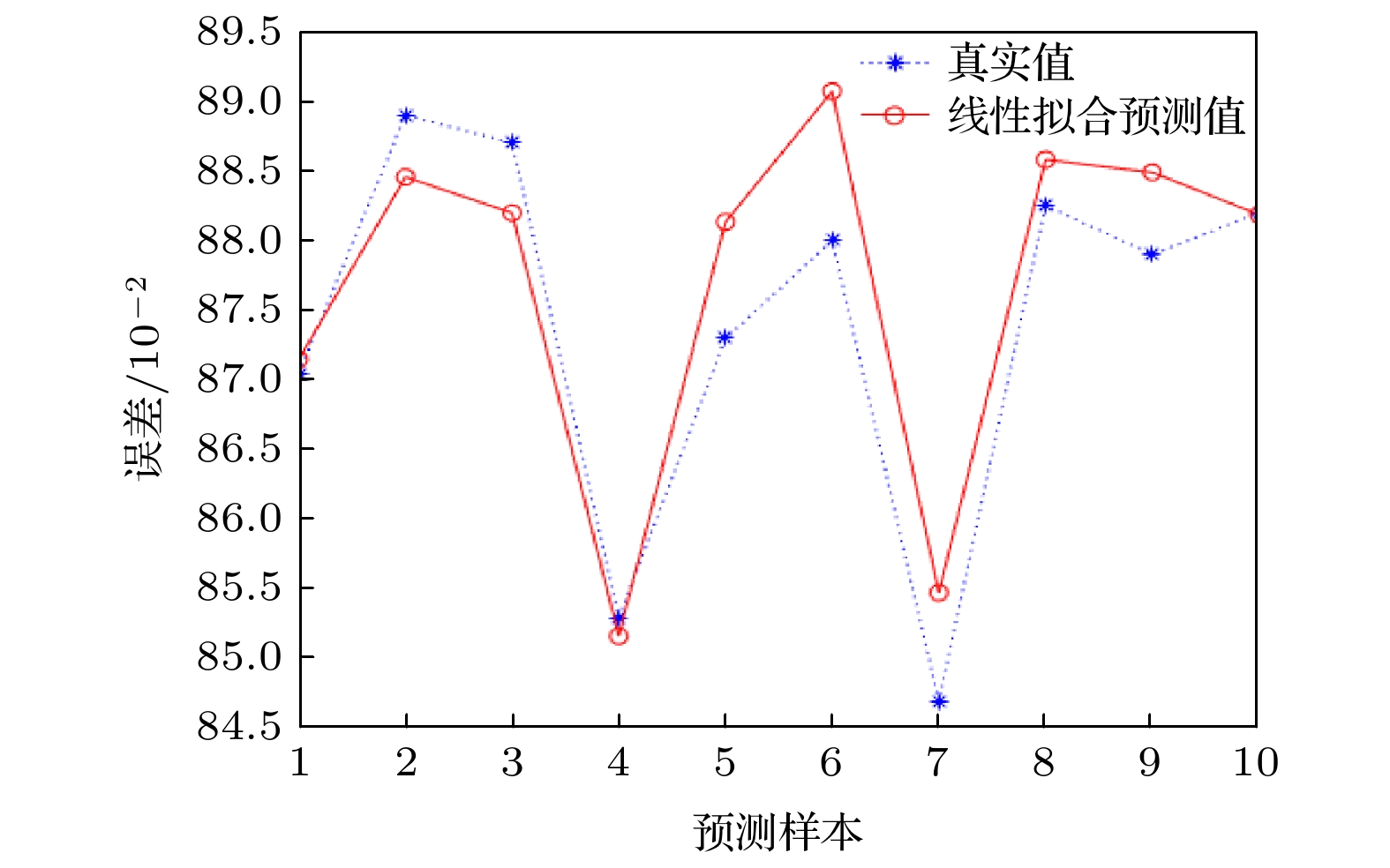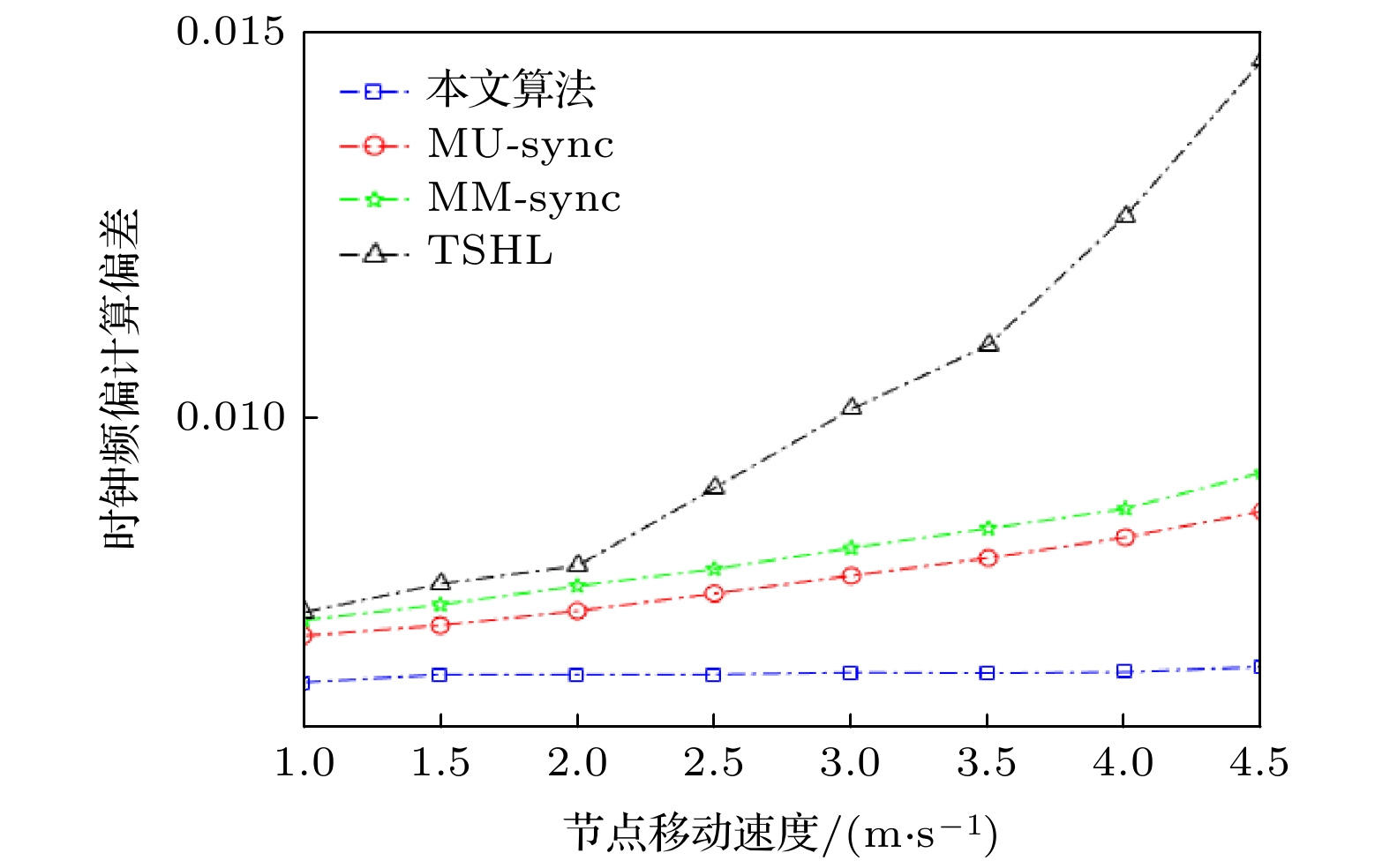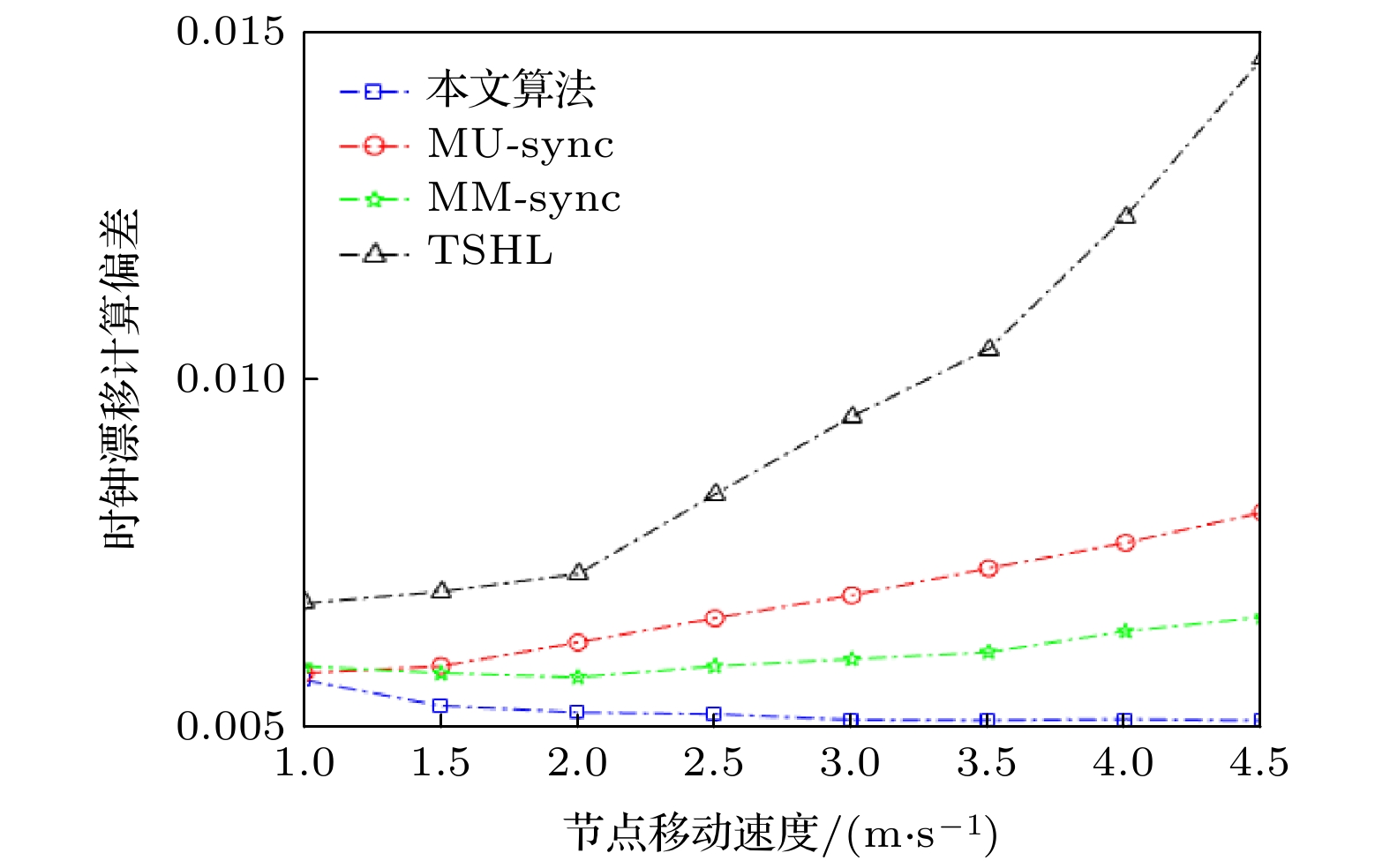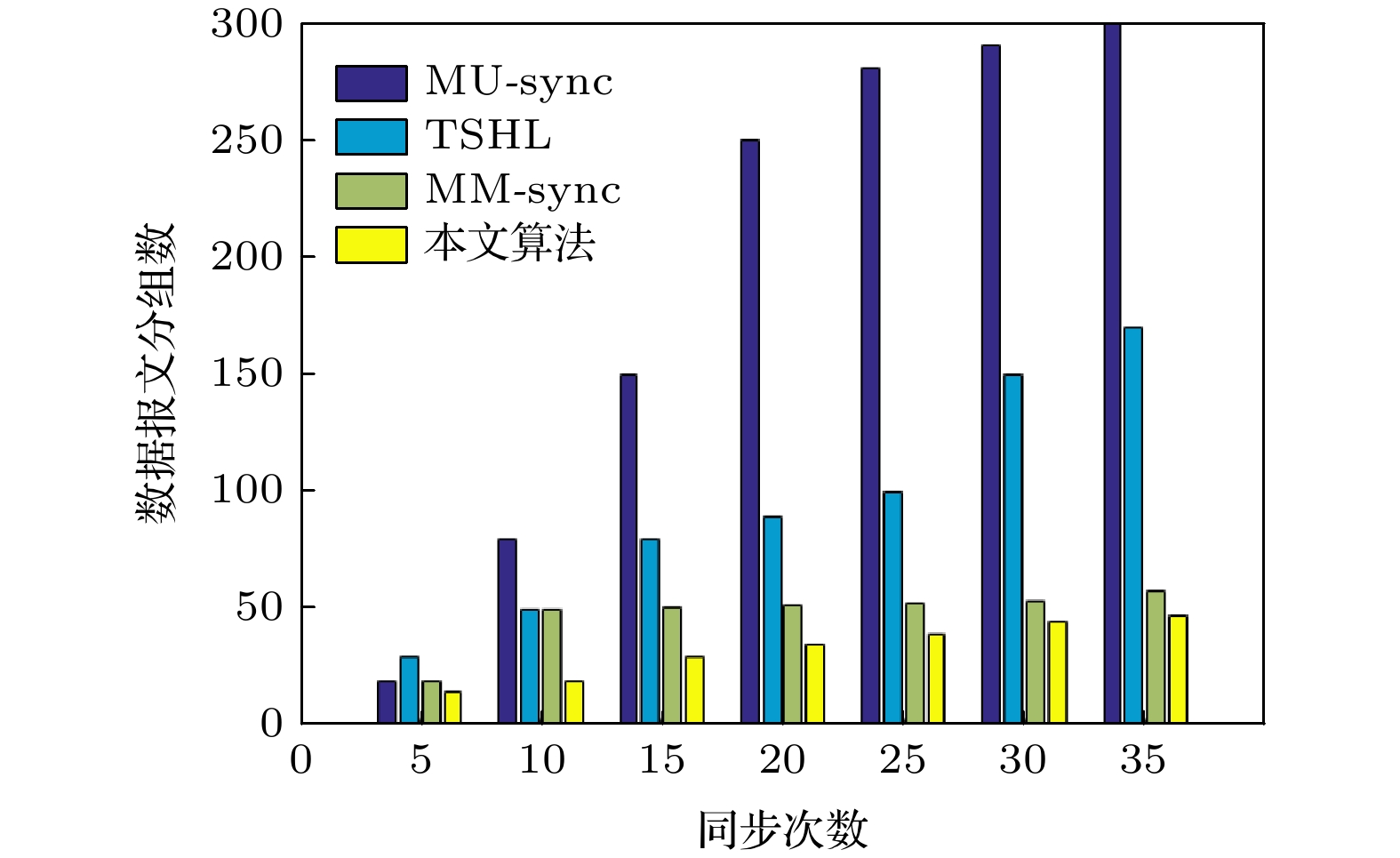-
Error compensation is an important guarantee method to ensure the accuracy of clock synchronization in underwater sensor networks. Existing research methods mainly use linear fitting and least square method to compensate for clock synchronization parameters. Underwater wireless sensor network nodes are mobile, which leads the network nodes to be always in a time-varying state. In the process of synchronous forwarding, the position where the node sends and receives data packets will change, resulting in a relative moving distance, leading the dynamic delay to an increase in. In this way, as the number of forwarding nodes increases, the error of the clock gradually increases, causing the synchronization accuracy of the underwater sensor wireless network to gradually decrease. The existing underwater wireless sensor network clock synchronization algorithm does not fully consider the dynamic time delay caused by the movement of the node with the ocean current. It only uses the time stamp mechanism to solve the clock synchronization parameters, and then uses the traditional linear fitting to refine the synchronization parameters. The accurate solution of dynamic time delay is a key factor of synchronization accuracy. The use of traditional optimization algorithms to refine the synchronization parameters can easily fall into a local optimum, which makes the synchronization accuracy not high. Therefore, the existing traditional research on clock synchronization algorithms cannot well solve the problem of clock synchronization accuracy caused by node mobility. However this type of method does not consider the clock synchronization accuracy of node movement affected by ocean currents. To solve this problem, this paper proposes a clock synchronization error compensation algorithm based on BP neural network model. First, the deep-sea Lagrangian ocean current model is used to describe the movement of underwater nodes and simulate the movement speed of underwater nodes, and then a clock synchronization parameter model is established, and finally a BP neural network clock synchronization error compensation model is build, which conforms to the underwater environment, and the excitation function is defined, and regular term factor and compensatory factor are introduced to avoid model over-fitting. The BP neural network model clock synchronization error compensation algorithm is established for error back propagation. Simulation experiments show that compared with the comparison algorithm TSHL, MM-sync, and MU-sync, the accuracy of clock synchronization, namely the error between clock synchronization time and standard time, increased by 37.42%, 17.29% and 21.86%, and the mean square error is significantly reduced.
-
Keywords:
- error compensation /
- underwater sensor network /
- BP neural network /
- clock synchronization
[1] MacKenzie A B, DaSilva L A 2019 Sensors 57 36
 Google Scholar
Google Scholar
[2] Hao X C, Zhang Y X, Jia N, Liu B 2018 Wirel. Pers. Commun. 69 1289
 Google Scholar
Google Scholar
[3] Li N, Hou J C, Sha L 2019 Wirel. Commun. 4 1195
 Google Scholar
Google Scholar
[4] 彭海霞, 赵海, 李大舟, 林川 2014 物理学报 63 090206
 Google Scholar
Google Scholar
Peng H X, Zhao H, Li D Z, Lin C 2014 Acta Phys. Sin. 63 090206
 Google Scholar
Google Scholar
[5] 孙大洋, 钱志鸿, 韩梦飞, 王雪 2014 电子学报 42 1601
 Google Scholar
Google Scholar
Sun D Y, Qian Z H, Han M F, Wang X 2014 Acta Electron. Sin. 42 1601
 Google Scholar
Google Scholar
[6] Zhang C, Fei S M, Zhou X P 2018 Chin. Phys. B 21 120101
 Google Scholar
Google Scholar
[7] A. A. Syed and J. Heidemann 2006 25th IEEE International Conference on Computer Communications Barcelona, Spain April 23–29, 2006 p161
[8] 王慧强, 温秀秀, 林俊宇, 冯光升 2016 通信学报 17 620
 Google Scholar
Google Scholar
Wang H Q, Weng X X, Lin J Y, Feng G S 2016 Journal of Communications. 17 620
 Google Scholar
Google Scholar
[9] Chirdchoo, N, W. S. Soh, K. C. Chua 2008 Proceedings of the Third Workshop on Underwater Networks (WUWNET), San Francisco, California, USA, September 15, 2008 p201
[10] Yaghoubi F, Abbasfar A A, Maham B 2019 IEEE Commun. Lett. 18 973
 Google Scholar
Google Scholar
[11] Wang X, Sheng M, Liu M, Zhai D, Zhang Y 2018 Wireless Communications and Networking Conference (WCNC) Shanghai, China, April 7–10, 2018 p1009
[12] Sajjad Z, Nasser Y, Amir N 2018 Comput. Netw. 56 902
 Google Scholar
Google Scholar
[13] Zou Y L, Zhu J, Zheng B Y, Tang S L 2010 IEEE Global Telecommunications Conference (GLOBECOM 2010) Miami Florida, USA, December 6–10, 2010 p1
[14] Komali R S, MacKenzie A B 2016 Proceedings of IEEE CCNC Las Vegas Conference Arizona, USA, January 8–10, 2016 p563
[15] Kim S, Yoo Y 2019 INT J DISTRIB SENS N. 8 18
 Google Scholar
Google Scholar
[16] Yu K, Guo Y J, Hedley M 2018 IET Signal Proc. 3 106
 Google Scholar
Google Scholar
[17] Laska J, Bradley W, Rondeau T 2011 IEEE Symposium on New Frontiers in Dynamic Spectrum Access Networks Aachen, Germany, May 3–6, 2011 p156
[18] Shi M Z, Wang N Z, Lei B, Ying J J, Zhu C S, Sun Z L, Cui J H, Meng F B, Shang C, Ma L K, Chen X H 2018 New J. Phys. 20 123007
 Google Scholar
Google Scholar
[19] Iyo A, Kawashima K, Kinjo T, Nishio T, Ishida S, Fujihisa H, Gotoh Y, Kihou K, Eisaki H, Yoshida Y 2016 J. Am. Chem. Soc. 138 3410
 Google Scholar
Google Scholar
[20] Blomberg E, Tanatar M, Fernandes R, Mazin I, Shen B, WenH H, Johannes M, Schmalian J, Prozorov R 2017 Nat. Commun. 4 1914
[21] Fang L, Luo H Q, Cheng P, Wang Z S, Jia Y, Mu G, Shen B, Mazin I I, Shan L, Ren C, Wen H H 2018 Phys. Rev. B 80 140508
[22] Shimojima T, Sakaguchi F, Ishizaka K, Ishida Y, Kiss T, Okawa M, Togashi T, Chen C T, Watanabe S, Arita M, Shimada K, Namatame H, Taniguchi M, Ohgushi K, Kasahara S, Terashima T, Shibauchi T, Matsuda Y, Chainani A, Shin S 2016 Science 332 564
[23] Ho K C, Lu X, Kovavisaruch L 2017 IEEE Trans. 55 684
 Google Scholar
Google Scholar
[24] Wang C, Li Y, Zhu Z, Jiang S, Lin X, Luo Y, Chi S, Li L, Ren Z, He M, Chen H, Wang Y T, Tao Q, Cao G H, Xu Z A 2017 Phys. Rev. B 79 054521
 Google Scholar
Google Scholar
[25] Newman M E J, Strogatz S H, Watts D J 2011 Phys. Rev. 64 026118
 Google Scholar
Google Scholar
[26] Analytis J G, Kuo H, McDonald R D, Wartenbe M, Hussey N, Fisher I 2016 Nat. Phys. 10 194
 Google Scholar
Google Scholar
[27] Kleinrock L, Silvester J 2008 Proceedings of the National Telecommunications Conference Birmingham Ala, USA, March 27, 2008 p10
[28] Hayes I M, McDonald R D, Breznay N P, Helm T, Moll P J, Wartenbe M, Shekhter A, Analytis J G 2016 Nat. Phys. 12 916
 Google Scholar
Google Scholar
-
表 1 模型搭建阶段
Table 1. Model construction phase.
算法: 基于BP神经网络模型时钟同步误差补偿算法 输入: $\begin{array}{l} {{a}} = [{a_1}, {a_2}, {a_3}, \cdots, {a_i}, \cdots, {a_m}], i = 1, 2, \cdots m \\ {{b}} = [{b_1}, {b_2}, {b_3}, \cdots, {b_i}, \cdots, {b_m}], i = 1, 2, \cdots m \\ {{t}} = [{t_1}, {t_2}, {t_3}, \cdots, {t_i}, \cdots, {t_m}], i = 1, 2, \cdots m \end{array} $ 阶段1: BP模型搭建阶段 01: 算法 02: 算法阶段一开始 03: 数据收集 04: $\begin{array}{l}m\leftarrow \big\{ {{a} }=[{a}_{1}, {a}_{2}, {a}_{3}, \cdots, {a}_{i}, \cdots, {a}_{m}], \;\\{{b} }=[{b}_{1}, {b}_{2}, {b}_{3}, \cdots, {b}_{i}, \cdots, {b}_{m}], \\{{t} }=[{t}_{1}, {t}_{2}, {t}_{3}, \cdots, {t}_{i}, \cdots, {t}_{m}]\big\}\end{array}$ 05: 数据归一化 06: $\tilde m \leftarrow m$ 07: for $c = {\rm{ 1}}$, $c \leqslant 10, {\rm{c}} + + $ 08: 根据$l \!=\! \sqrt{q \!+\! s} \!+\! c$计算隐藏层的神经元的个数 09: BP神经网络模型 10: end for 11: end 表 2 模型训练阶段
Table 2. Model training stage.
阶段2: BP网络模型训练阶段 01: 算法开始 02: 开始训练网络 03: 参数初始化 04: 随机设置$w \in (0, 1), b \in (0, 1),~ \alpha \in (0, 1), $
$ \rlap-{\lambda} \in (0, 1),~ \sigma \in (0, 1)$05: r =3000, $\rho $ = 0.001 06: create $f(x)$, P 07: $\tilde m$ 分成训练集和测试集 08: start training 09: for all $\left\{ {{t_i}, {a_i}, {b_i}} \right\} \in \tilde m$ do 10: if ($E > \rho $) do 11: $w, b$ 被更新 $w_{ij}^{(l)}, b_i^{(l)}$ according to Eq. (20) and Eq. (21) 12: end if 13: end for 14: 输出J 15: end 表 3 模型预测阶段
Table 3. Model prediction stage.
阶段3: BP网络预测 01: 开始 02: 算法预测 03: 当满足条件时, 执行以下 04: if ($E < $$\rho $) do 05: 停止训练 06: 得到J 07: 输入$[{a_{i + 1}}, {b_{i + 1}}]$ to J 08: 输出$[{\tilde a_{i + 1}}, {\tilde b_{i + 1}}]$ 09: end if 10: end 表 4 实验参数
Table 4. Experimental parameter setting.
仿真实验参数 符号表示 数值 浮标节点 N 2 节点布置区域/m3 O $400 \times 400 \times 400$ 普通传感器节点 m 200 迭代次数 r 3000 正则惩罚因子 $\rlap-{\lambda}$ 0.01 稀疏性惩罚因子 $\sigma $ 0.03 稀疏性因子 $\tau $ 0.6 激活因子 $\zeta $ 0.4 -
[1] MacKenzie A B, DaSilva L A 2019 Sensors 57 36
 Google Scholar
Google Scholar
[2] Hao X C, Zhang Y X, Jia N, Liu B 2018 Wirel. Pers. Commun. 69 1289
 Google Scholar
Google Scholar
[3] Li N, Hou J C, Sha L 2019 Wirel. Commun. 4 1195
 Google Scholar
Google Scholar
[4] 彭海霞, 赵海, 李大舟, 林川 2014 物理学报 63 090206
 Google Scholar
Google Scholar
Peng H X, Zhao H, Li D Z, Lin C 2014 Acta Phys. Sin. 63 090206
 Google Scholar
Google Scholar
[5] 孙大洋, 钱志鸿, 韩梦飞, 王雪 2014 电子学报 42 1601
 Google Scholar
Google Scholar
Sun D Y, Qian Z H, Han M F, Wang X 2014 Acta Electron. Sin. 42 1601
 Google Scholar
Google Scholar
[6] Zhang C, Fei S M, Zhou X P 2018 Chin. Phys. B 21 120101
 Google Scholar
Google Scholar
[7] A. A. Syed and J. Heidemann 2006 25th IEEE International Conference on Computer Communications Barcelona, Spain April 23–29, 2006 p161
[8] 王慧强, 温秀秀, 林俊宇, 冯光升 2016 通信学报 17 620
 Google Scholar
Google Scholar
Wang H Q, Weng X X, Lin J Y, Feng G S 2016 Journal of Communications. 17 620
 Google Scholar
Google Scholar
[9] Chirdchoo, N, W. S. Soh, K. C. Chua 2008 Proceedings of the Third Workshop on Underwater Networks (WUWNET), San Francisco, California, USA, September 15, 2008 p201
[10] Yaghoubi F, Abbasfar A A, Maham B 2019 IEEE Commun. Lett. 18 973
 Google Scholar
Google Scholar
[11] Wang X, Sheng M, Liu M, Zhai D, Zhang Y 2018 Wireless Communications and Networking Conference (WCNC) Shanghai, China, April 7–10, 2018 p1009
[12] Sajjad Z, Nasser Y, Amir N 2018 Comput. Netw. 56 902
 Google Scholar
Google Scholar
[13] Zou Y L, Zhu J, Zheng B Y, Tang S L 2010 IEEE Global Telecommunications Conference (GLOBECOM 2010) Miami Florida, USA, December 6–10, 2010 p1
[14] Komali R S, MacKenzie A B 2016 Proceedings of IEEE CCNC Las Vegas Conference Arizona, USA, January 8–10, 2016 p563
[15] Kim S, Yoo Y 2019 INT J DISTRIB SENS N. 8 18
 Google Scholar
Google Scholar
[16] Yu K, Guo Y J, Hedley M 2018 IET Signal Proc. 3 106
 Google Scholar
Google Scholar
[17] Laska J, Bradley W, Rondeau T 2011 IEEE Symposium on New Frontiers in Dynamic Spectrum Access Networks Aachen, Germany, May 3–6, 2011 p156
[18] Shi M Z, Wang N Z, Lei B, Ying J J, Zhu C S, Sun Z L, Cui J H, Meng F B, Shang C, Ma L K, Chen X H 2018 New J. Phys. 20 123007
 Google Scholar
Google Scholar
[19] Iyo A, Kawashima K, Kinjo T, Nishio T, Ishida S, Fujihisa H, Gotoh Y, Kihou K, Eisaki H, Yoshida Y 2016 J. Am. Chem. Soc. 138 3410
 Google Scholar
Google Scholar
[20] Blomberg E, Tanatar M, Fernandes R, Mazin I, Shen B, WenH H, Johannes M, Schmalian J, Prozorov R 2017 Nat. Commun. 4 1914
[21] Fang L, Luo H Q, Cheng P, Wang Z S, Jia Y, Mu G, Shen B, Mazin I I, Shan L, Ren C, Wen H H 2018 Phys. Rev. B 80 140508
[22] Shimojima T, Sakaguchi F, Ishizaka K, Ishida Y, Kiss T, Okawa M, Togashi T, Chen C T, Watanabe S, Arita M, Shimada K, Namatame H, Taniguchi M, Ohgushi K, Kasahara S, Terashima T, Shibauchi T, Matsuda Y, Chainani A, Shin S 2016 Science 332 564
[23] Ho K C, Lu X, Kovavisaruch L 2017 IEEE Trans. 55 684
 Google Scholar
Google Scholar
[24] Wang C, Li Y, Zhu Z, Jiang S, Lin X, Luo Y, Chi S, Li L, Ren Z, He M, Chen H, Wang Y T, Tao Q, Cao G H, Xu Z A 2017 Phys. Rev. B 79 054521
 Google Scholar
Google Scholar
[25] Newman M E J, Strogatz S H, Watts D J 2011 Phys. Rev. 64 026118
 Google Scholar
Google Scholar
[26] Analytis J G, Kuo H, McDonald R D, Wartenbe M, Hussey N, Fisher I 2016 Nat. Phys. 10 194
 Google Scholar
Google Scholar
[27] Kleinrock L, Silvester J 2008 Proceedings of the National Telecommunications Conference Birmingham Ala, USA, March 27, 2008 p10
[28] Hayes I M, McDonald R D, Breznay N P, Helm T, Moll P J, Wartenbe M, Shekhter A, Analytis J G 2016 Nat. Phys. 12 916
 Google Scholar
Google Scholar
Catalog
Metrics
- Abstract views: 5037
- PDF Downloads: 123
- Cited By: 0














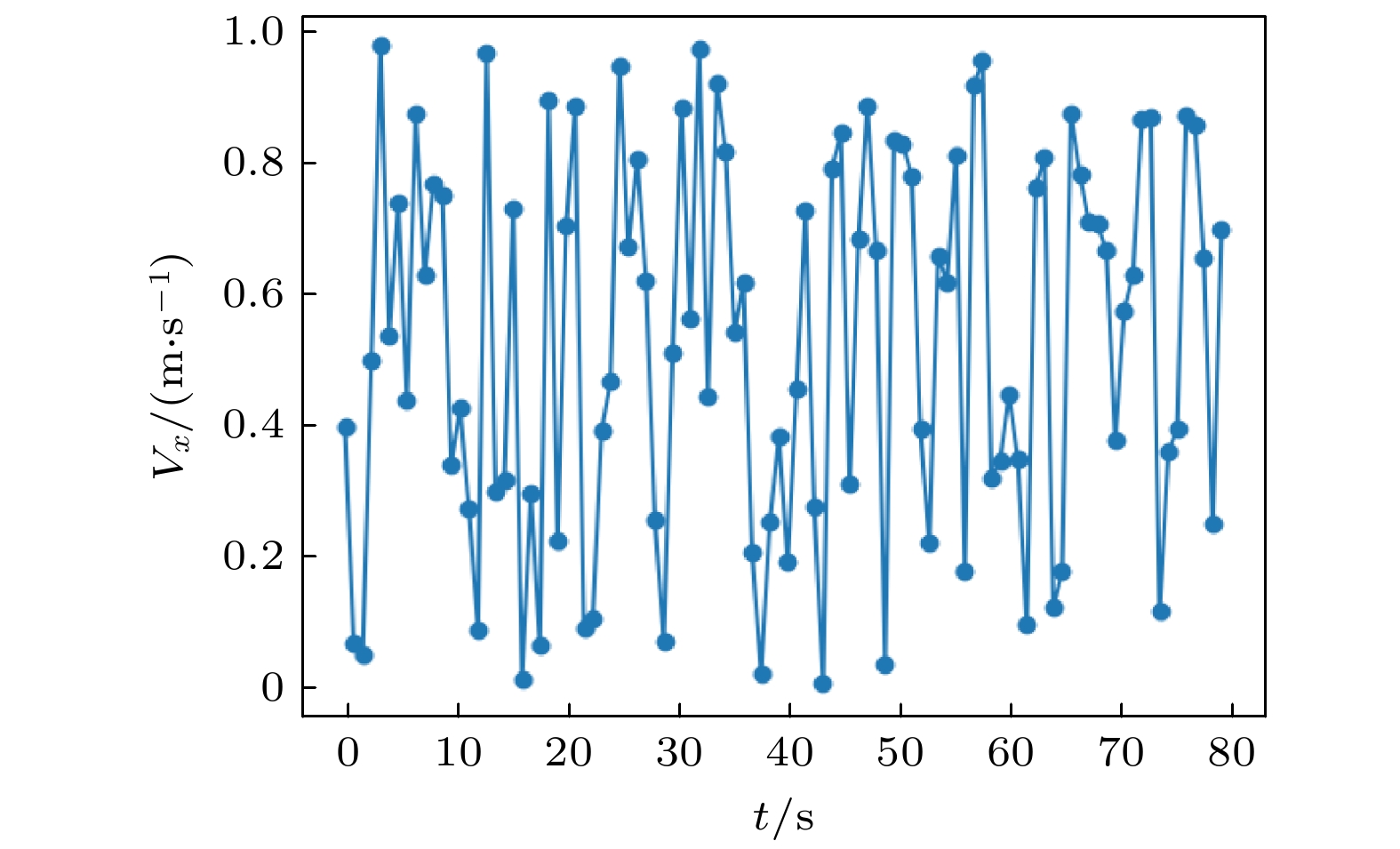
 DownLoad:
DownLoad:
